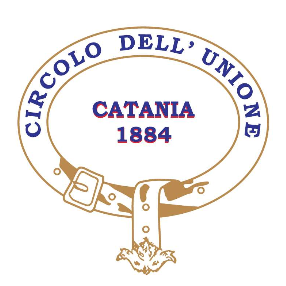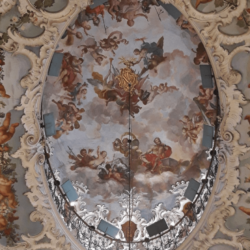Circolo Unione Catania 1884
Clubhouse
The headquarters of the Circolo Unione di Catania is located in the seventeenth-century Palazzo Biscari.
Palazzo Biscari is the most important private palace in Catania, built at the behest of the Paternò Castello family, princes of Biscari, starting from the end of the seventeenth century and for much of the following century, following the catastrophic earthquake of 11 January 1693.
The new palace was built on the walls of Catania, built at the behest of Emperor Charles V in the sixteenth century and which had partially resisted the fury of the earthquake: the Biscari were one of the few aristocratic families of the city who obtained royal permission to build on they.
The oldest part of the palace was built at the behest of Ignazio, third prince of Biscari, who entrusted the project to the architect Alonzo Di Benedetto, but it was Ignazio’s son, Vincenzo, who succeeded his father in 1699, who commissioned the decoration of the seven splendid large windows overlooking the marina, the work of the Messina sculptor Antonino Amato.
Subsequently the palace was modified at the behest of Ignazio Paternò Castello, fifth prince of Biscari, who had it expanded towards the east based on a design by Girolamo Palazzotto and, subsequently, by Francesco Battaglia.
The building was finally completed in 1763 and inaugurated with grandiose celebrations.
The palace is accessed through a large portal on Via Museo Biscari.

Palazzo Biscasri 1693
HISTORY and ART
The palace of the Paternò Castello, Princes of Biscari is, together with the Benedictine Monastery of San Nicolò l’Arena, the most important and well-known building of eighteenth-century architecture in Catania.
It stands on a section of the sixteenth-century walls of the city, on which, immediately after the earthquake of 1693, Ignazio Paternò Castello III, Prince of Biscari (d. 1699), obtained permission to build the palace from the lieutenant general Giuseppe Lanza, duke of Camastra, architect of the reconstruction of Catania, envoy of the King of Spain Charles II of Habsburg.
The palace belonged entirely to the Princes of Biscari until the mid-19th century, then, through various succession steps, it became the property of the Moncada Paternò Castello, a branch of the Paternò Castello family.
Since 1971 the palace has hosted exhibitions and concerts. It saw the debut of I Vivai del Sud, the concerts of the Associazione Musicale Etnea (with Nikita Magaloff), the visit of the Queen Mother of England (in the photo).
Palazzo Biscari joins the European network “Le Dimore del Quartetto”, which enhances young string quartets and historic homes in a circular economy.
The palace is still largely inhabited today by the family’s descendants and its main halls are often used for prestige events of a social and cultural nature.
Most of the collections collected in the museum of the Prince of Biscari were donated to the municipality and transferred to the Civic Museum of Castello Ursino.
Palazzo Biscari 1693
Visit
The palace of the Paternò Castello, Princes of Biscari is, together with the Benedictine Monastery of San Nicolò l'Arena, the most important and well-known building of eighteenth-century architecture in Catania. Guided tours are available.
Palazzo Biscari 1693
Exhibitions
Palazzo Biscari boasts an ancient tradition linked to art and exhibitions starting from the 18th century. Recently the Palace has also opened up to innovative exhibitions by international artists, catalysing the interest of citizens, tourists and the media.
Palazzo Biscari 1693
Events
Palazzo Biscari is a precious testimony of Sicilian baroque. Its frescoed halls, full of charm and elegance, are a splendid location baroque in Catania center for concerts, meetings, receptions, gala evenings, fashion shows, films and more.







